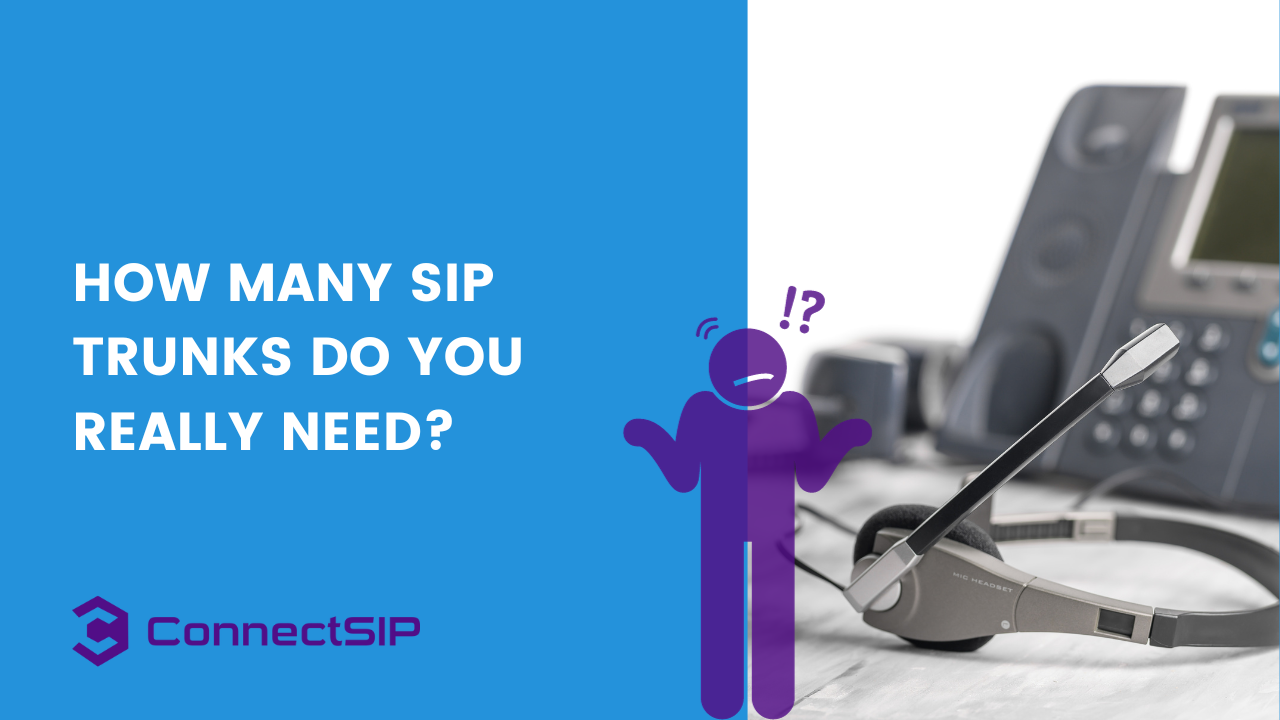Are you new to the world of SIP trunking with Asterisk and feeling a bit overwhelmed? Don’t worry, we’ve got you covered! In this beginner’s guide, we’ll walk you through the basics of SIP trunking and how to set it up with the popular open-source communication platform, Asterisk.
Whether you’re a small business owner in Nigeria looking to upgrade your phone system or an IT professional seeking to expand your knowledge, this guide is the perfect starting point. So let’s dive in!
Table of Contents
ToggleWhat is SIP trunking?
SIP trunking is a cost-effective and flexible way to connect your business phone system to the public switched telephone network (PSTN) through the Internet. By using SIP (Session Initiation Protocol), you can make and receive phone calls over your internet connection, eliminating the need for traditional phone lines.
SIP trunking works by converting voice calls into digital packets, which are then transmitted over the internet to the SIP trunk provider, who connects the call to the recipient’s phone number. This allows for seamless communication between different networks, regardless of the location.
SIP trunking offers several advantages over traditional phone systems. First and foremost, it is much more scalable, allowing businesses to easily add or remove phone lines as needed. It also provides significant cost savings, as there is no need to invest in expensive hardware or pay for multiple phone lines. Additionally, SIP trunking offers improved call quality and reliability, as calls are transmitted over secure internet connections.
Benefits of using SIP trunking with Asterisk
When it comes to choosing a communication platform for SIP trunking, Asterisk is a popular choice among businesses and IT professionals. Asterisk is an open-source software that provides all the necessary tools to set up and manage a SIP trunking system.

One of the key benefits of using Asterisk for SIP trunking is its flexibility. It can be easily integrated with existing phone systems, allowing businesses to leverage their current investments. Asterisk also supports various protocols and codecs, ensuring compatibility with different devices and networks.
Another advantage of using Asterisk is its extensive feature set. It supports advanced call routing capabilities, allowing Nigerian businesses to create complex call flows and implement customized call handling rules. Asterisk also offers built-in support for voicemail, interactive voice response (IVR), and call recording, among other features.
Furthermore, Asterisk has a large and active community of developers and users, which means there is plenty of documentation, tutorials, and support available.
How SIP trunking works with Asterisk
Now that we understand the basics of SIP trunking and the benefits of using Asterisk, let’s dive into how SIP trunking works with Asterisk.
To set up SIP trunking with Asterisk, you will need a few key components. First, you will need an internet connection with sufficient bandwidth to handle voice calls. Next, you will need a SIP trunk provider that will act as the bridge between your Asterisk system and the PSTN. Lastly, you will need a compatible IP phone or softphone to make and receive calls.
The first step is to configure Asterisk to work with your provider. This involves creating a SIP trunk configuration file, which specifies the connection details, authentication credentials, and other settings required to establish a connection with the SIP trunk provider.
Once the SIP trunk is configured, you will need to configure your IP phone or softphone to connect to Asterisk. This typically involves entering the SIP server address, username, password, and other relevant information into the phone’s settings.
With everything set up, you can now start making and receiving calls using your SIP trunk. Asterisk will handle the call routing and ensure that the calls are properly connected to the recipient’s phone number.
Configuring Asterisk for SIP trunking
Configuring Asterisk for SIP trunking requires some technical knowledge, but it can be done with the help of documentation and tutorials available online. Here are the basic steps to configure Asterisk for SIP trunking:
- Install Asterisk on your server or virtual machine.
- Configure the SIP trunk provider settings in the `sip.conf` file.
- Configure the dial plan in the `extensions.conf` file to define how calls are routed.
- Set up IP phones or softphones to connect to Asterisk using the SIP server address and authentication credentials.
It’s important to note that the configuration process may vary depending on the specific SIP trunk provider and the features you want to enable.
Troubleshooting common issues with SIP trunking and Asterisk
Here are some common issues that you may encounter when setting up and using SIP trunking with Asterisk, along with some troubleshooting tips:
- Call quality issues: Poor call quality can be caused by various factors, such as network congestion, inadequate bandwidth, or incorrect codec settings. To troubleshoot call quality issues, try adjusting the codec settings, checking your network connection, and working with your internet service provider to ensure sufficient bandwidth.
- Authentication errors: If you’re experiencing authentication errors when trying to connect to your SIP trunk provider, double-check the username and password in your Asterisk configuration. Make sure they match the credentials provided by your SIP trunk provider.
- Firewall and network configuration: SIP trunking requires certain ports to be open on your firewall and proper network configuration to function correctly. If you’re having trouble with incoming or outgoing calls, check your firewall settings and network configuration to ensure they allow SIP traffic.
- Trouble with inbound calls: If you’re unable to receive incoming calls, verify that your SIP trunk provider is sending the calls to the correct IP address and port configured in your Asterisk system. Also, check your dial plan configuration to ensure the calls are being routed correctly.
SIP trunking providers for Asterisk in Nigeria
If you’re located in Nigeria and looking for SIP trunking providers that are compatible with Asterisk, here are a few options to consider:
- ConnectSIP: ConnectSIP offers SIP trunking services specifically designed for Asterisk users in Nigeria. They provide competitive pricing, reliable connectivity, and excellent customer support.
- 3CX Nigeria: 3CX is another popular choice for SIP trunking with Asterisk in Nigeria. They offer flexible plans, advanced features, and a user-friendly interface for managing your SIP trunk.
- Astraqom: Astraqom is known for its high-quality voice services and extensive network coverage in Nigeria. They offer SIP trunking solutions tailored to Asterisk users, with competitive pricing and excellent call quality.
Conclusion
In this beginner’s guide, we explored the world of SIP trunking with Asterisk. We learned about the basics of SIP trunking, its benefits, and how it works with Asterisk. We also discussed the steps involved in configuring Asterisk for SIP trunking and troubleshooting common issues.
SIP trunking with Asterisk offers Nigerian businesses a cost-effective and flexible solution for their communication needs. Whether you’re a small business owner or an IT professional, it is a powerful tool that can help you streamline your business communication.
So, take the first step and dive into the world of SIP trunking with Asterisk. With the right knowledge and resources, you’ll be able to harness the power of SIP trunking to enhance your business communication and stay ahead in today’s competitive market.











